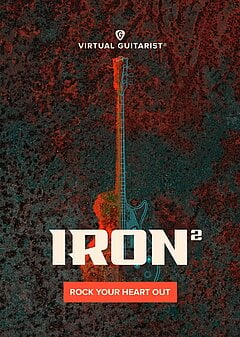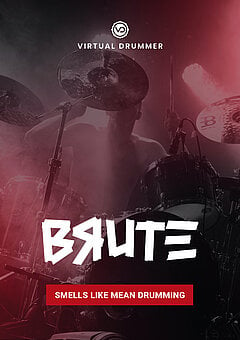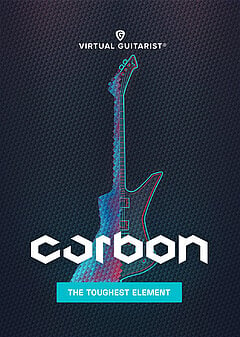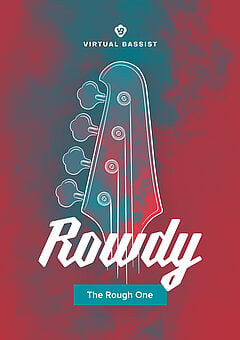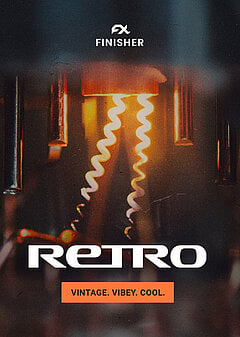The Ultimate Guide to 70s Rock
Discover how to easily capture the iconic sound of a classic decade, in the styles of multiple different bands.
OCTOBER 3RD, 2021
Are you interested in bringing back the glorious and rebellious sounds of 70's rock? Read on and find out more about the diversity within this genre and what it takes to work the sound of the 70's into your song:
If you want to get the authentic sound of a classic 70s electric guitar but aren’t a guitarist yourself, check out our legendary Virtual Guitarist IRON 2! And it’s the best time ever to get it: save up to 75% on all UJAM plug-ins this summer. It will make it even easier to follow along and put everything here into practice. Let’s start with the different styles you’ll encounter.
Types of 70s rock
In the 70s, the counterculture movement in the United States was in full swing, and with it came a rebellious wave and a desire for free expression, which you can clearly hear in the romantic lyrics of gentler acoustic rock and release of frustration and intensity in heavy rock. The more rock & roll-style music has less of these themes, and the lyrics often aren’t as expressive (or at least, not in the same ways). An incredible variety of different themes, styles and unique vibes came together to form a single, cohesive whole. It would be impossible to lump them all together, so we’ll identify some of the most common distinctive styles:
Folk/acoustic rock: gentle, using acoustic (both standard steel and 12-string) guitars and little to no drums or percussion. If you’re in the mood for something more romantic and meditative within the 70s umbrella, try this style. Landslide by Fleetwood Mac is a perfect example.
Heavy rock: rapid, driving drum and distorted electric guitar grooves with raspy or intense vocals. This is a fun choice if you want to get playfully aggressive — more intense than folk or acoustic rock, but less so than the evolution of metal. Think Immigrant Song by Led Zeppelin.
Rock & roll: similar to heavy rock, but with a more Southern American feel and a more major, upbeat tonality. Songs in this grouping tend to find their roots in blues and true, old school rock & roll, starting with and growing out of a single catchy riff. Sweet Emotion by Aerosmith captures this feel nicely, and Sweet Home Alabama by Lynyrd Skynyrd demonstrates powerful use of a single riff.
This is just one means of differentiating styles of course, but it’s a helpful start for navigating such a tremendous range of songs from a wide variety of artists! We’ll keep things as general as possible, but you may notice a few type-specific production notes to make creating 70s-style rock a bit easier.
Basic grooves
70s rock grooves typically fall into a 4-to-the-floor pattern of kick on beats 1 and 3, with snare hits on beats 2 and 4. The way you deviate from that defines the feel of the song and separates it from others since most songs are essentially working off of the same foundation. Variety usually (but not always) comes from additional kick hits, not so much the snare — the solid 2 and 4 hits are what keep the song moving and allow for more freedom in the rest of the kit. Contrast this with more modern music in which the snare is often the more active of the two; this distinction can be subtle but can help you anchor your music in the decade of your choice.
Acoustic rock relies heavily on closed hi hats to occupy the space between the kick and snare — it’s vital to keep the beat tight and leave plenty of space in the drum and percussion mix, allowing the vocals to come through more without everything becoming too driving or intense. Heavy rock is often the opposite, favoring crash and splash cymbals to push the song forward and keep up a good pace. You’re going to get some messiness from the electric guitars anyway, which might otherwise drown out the hi-hats! It’s generally a good idea to keep the energy and style consistent between different instruments rather than having one instrument dry, tight and bright versus another with a thick mid range and drenched in reverb (this also makes the mixing process easier later).
Chords
Guitar usually provides most of the chords, sometimes with the addition of piano (such as in Elton John’s Rocket Man). Chord progressions varied widely between bands — for example, Queen’s chord choices never matched up much with Lynard Skynard. Many bands did have one thing in common, however: their use of uncommon chords and modal ‘borrowing’ (using a chord from a different key). Take Led Zeppelin’s classic Stairway to Heaven, for example, noting how many chords are different from what you would normally expect ... or the key modulation in Here, There and Everywhere by The Beatles. While no step-by-step guide could ever capture all the possible nuances, there are a couple quick ways to create more interesting 70s-style chord progressions.
Start by simply creating a chord progression you enjoy. No need for perfection or creating the most ‘correct’ material. Now for each chord, if it’s major, then make it minor and vice versa. Transpose the chord up or down a minor third. Add sevenths and extensions. If you’re feeling ambitious, be willing to completely disregard conventional music theory — The Beatles reportedly had no training in theory and yet created some of the most iconic music of the 70s! Understanding music theory is always helpful and opens up additional creative possibilities, but learning when to let it go is an art all its own.
To get in the groove when writing chords, try out UJAM’s newly updated Virtual Guitarist IRON 2! Complete with MIDI Drag & Drop, a stompbox emulation and a finisher to smooth everything out at the last stage. Try out the Bambalam preset for a heavy rock chord progression and start playing around. You can drag the MIDI out of the plugin and modify it freely, shaping it into your own progressions just how we described above. This is much faster than starting from scratch, and it’s an excellent way to overcome the initial hurdle of looking at a blank DAW session. For acoustic chords, AMBER is a great choice and will balance out your instrumentation quite nicely. Try creating an intro and verse with AMBER and segue into IRON for the chorus!
Mixing and production
While folk/acoustic, heavy and rock & roll all have different mixing standards, there are a few conventions you can use to cut down on mixing time and make decisions with less effort.
Take vocals, for example. Vocals in 70s rock are very rich and thick, which isn’t true of all genres. It’s only possible to achieve this when you leave plenty of room in the drum and electric guitar mixes in the mids and low mids, and some high end above 4kHz for clarity. If you’re using vocals, you’ll generally get the best mixes by prioritizing vocals above all else, by mixing in reference to them when deciding what to cut and boost in the surrounding instruments.
Everything in the drum kit primarily occupies its own distinct frequency range. While 70s rock typically isn’t exceptionally bright (especially compared with a lot of modern music), the hi hats and crash cymbals are high-passed at high frequencies or have the mid and low end cut heavily with a low-shelf EQ. Snare drums have a nice mid range thunk and some high frequency content. Kick drums aren’t super heavy, but they stay mainly in the lows and low mids plus a little crisp high-frequency transient. Toms usually have a noticeable crisp click on the front end and a round, dry low mid range.
For 70s electric guitars, one of their defining characteristics is that signature twang around 2kHz for ‘clean’ sounds vs. bite around 5kHz and 7kHz when using a more distorted sound (these bite ranges are important for electric guitars in nearly every genre; try giving them a little boost but be careful not to make them too harsh). Acoustic guitars are a completely different animal and prefer a warm low mid body and mid high to high end sparkle (especially 5kHz and above. That said, focus on the ranges that sound best for the particular instrument you’re using, whether virtual or real, as timbre varies widely depending on the make and model of the instrument.
Plate reverbs are great for 70s rock — roll off the high end a bit with EQ, keep the size relatively small and adjust to taste. Compressors are awesome, but keep the attack slow to let the transients through, and the release fast to bring the level back up after it dips. Beyond these general guidelines, you have a ton of freedom to work with, so go and experiment!
Wrapping up
While there’s no one-size-fits-all to 70s rock, different bands were aligned in their desire to create something new and different, launching a rebellious streak that continued well into the 1990s and beyond in different forms (check out our article How to Make Grunge to peek into another fantastic genre like this). Curate playlists of the songs you enjoy most, or reference an existing playlist like this Top 100 playlist to get yourself into the flow!
Keep in mind that when writing any ‘period’ music, it’s tricky to both create something new and nail the sound of that particular period. No need to do everything at once — simply listen to a ton of your favorite 70s rock, get a feel for it, and create from the mood you establish. The distinction between acoustic/folk, heavy and rock & roll will help narrow down your choices (it would be nearly impossible to create a hybrid of the 3 unless you’re already very comfortable writing in this genre). Find out what you like and tweak it a lot — then use your personal taste and new skills to work the sound of the 70s into any song you choose. Don’t be too critical of whether or not you get the tone perfect; just start creating, finishing and moving on and you’ll be amazed at how quickly you can grow!
About the Author
Harry Lodes is a copywriter, marketing consultant and content writer for audio and ecommerce brands. He lives in the Philadelphia area, releasing Eastern/Western hybrid EDM under the artist name KAIRI hearkening back to his roots in Berklee College of Music.
Stay up to date
Sign up and we’ll send you an e-mail with product news and helpful stuff every now and then. You may unsubscribe at any time.
Defy Limits
We develop software solutions that enable people to create, consume and interact with music.
